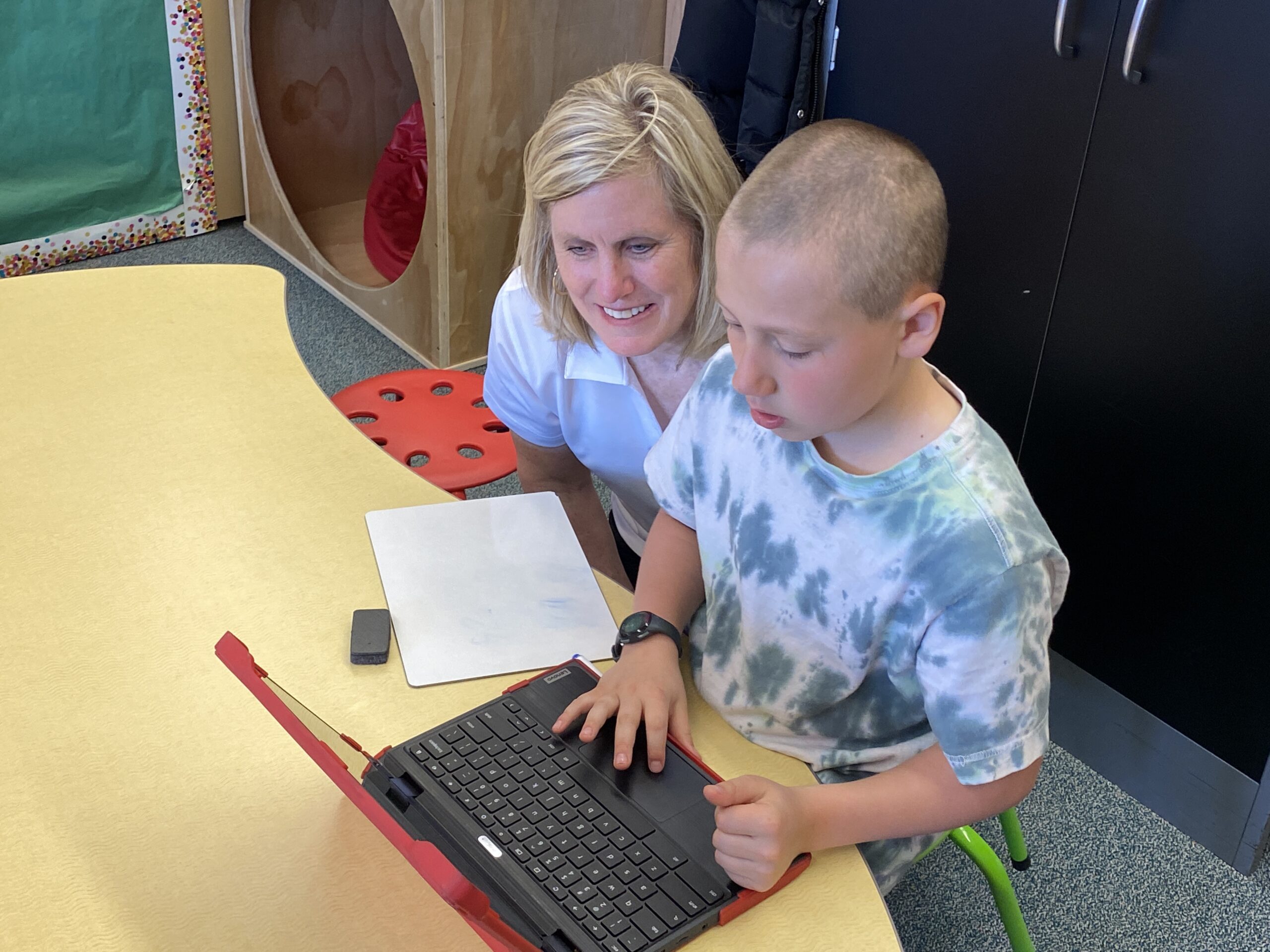
Six months after the Neenah Joint School District’s proposed property tax increase referendum failed, Superintendent Mary Pfeiffer went back to the public with “a better plan.”
While Pfeiffer describes the first measure as a complicated question about the Wisconsin district’s middle schools, the second was more tightly focused on raising $115 million to build a new high school and use the old building to serve middle schoolers, she says. One key to its passage in 2020 was the district’s decision to take out a loan to cover the rest of the project’s $190 million price tag. “It was like a match,” says Pfeiffer, Wisconsin’s 2022 superintendent of the year. “The district has a stake in the game and so does the community.”
Neenah’s new high school is an example of how Pfeiffer and two of her fellow District Administration Superintendents to Watch are trying to steer their students to bright futures.
‘Sources of Strength’
To get the funding passed, Pfeiffer and her team also worked to communicate the big benefits that up-to-date facilities bring to students academically, physically and social-emotionally. The new high school will have an extensive CTE wing that’s front-and-center with art studio space and various labs. Teachers will also have more flexible classrooms that support group learning and other modern and more challenging modes of instruction.
That academic focus includes requiring all students to take at least one college-credit-bearing course. This has given more students from lower socioeconomic backgrounds access to a college experience in a more comfortable K-12 setting. It has also helped a broader group of parents understand how they can save money by earning college credits in high school, Pfeiffer says.
When it comes to safety, it’s about being proactive and preventing students from reaching the crisis stage. Neenah’s educators try to ensure that every student feels a connection to at least one adult in their school. The district has also been providing mental health care on its campuses for several years. For families, this eliminates the barriers of having to find a therapist and take students out of school for treatment. Students also receive social-emotional wellness screeners on a regular basis.

The district also relies on its high school and middle school students to care for each other through its “Sources of Strength” program. These students spread the message to classmates that they should seek help if they are not feeling safe or well or if they know someone who is in distress.
Superintendents Summit
The District Administration Superintendents Summit offers cutting-edge professional development to school district superintendents and other senior education executives to inspire innovation and leadership excellence in K-12 education. Upcoming events in this series:
Jul 20 – Jul 22: Grand Geneva Resort & Spa, Lake Geneva, WI
Nov 9 – Nov 11: Omni La Costa Resort & Spa, Carlsbad, CA
Dec 14 – Dec 16: Ponte Vedra Inn & Club, Ponte Vedra, FL
“We work on recognizing that everyone has assets, and shifting the narrative from what’s wrong and what can’t we do to a narrative about gratitude, grace and support for each other,” she says.
Tickets to the future
The challenges of the pandemic have led to some of the biggest shifts education has experienced in decades, says Superintendent Mary Templeton of the Washougal School District on Washington’s border with Oregon. “We’ve seen the movement of systems that had never moved before,” Tempelton says. “Schools are thinking about being future-driven and reinventing how we do school by looking at the whole child and equitable outcomes.”
Templeton says she and her team are now working even harder to overhaul practices that have led to unequal outcomes for children from historically marginalized groups. That starts with helping staff reflect on their beliefs and recognize their own biases. Then, education can begin to build culturally responsive classroom environments for each student.
The district has established a community equity advisory team that’s open to parents and families. And its contract with the local teachers union specifies the creation of equity teams at each of its schools. The groups allow teachers to share ideas for culturally responsive instructional practices in professional learning communities. “These are ways of understanding how different cultures and value systems come into the classroom,” Templeton says. “It’s a way of analyzing how the system has not allowed all children to be successful.”
This work is why Washougal was chosen as an equity model in the Lighthouse Schools Systems program developed by AASA, the Superintendents Association. Equity also meshes with Washougal’s “whole child” mindset. Educators aim to create a strong sense of hope, resilience and belonging for each student, Templeton says.
Leadership void: Why districts are struggling to find new superintendents
At the elementary level, this is achieved through morning meetings where students can share their interests and aspirations, and ask for help if they are contending with academic or emotional challenges. Templeton and her team are also rethinking staffing structures to expand the number of adults in each classroom. She envisions paraprofessionals, student teachers, language pathologists and other specialists joining teachers for each day of instruction. These groups of educators will expand instruction from grading and assessing math and ELA skills to measuring students’ development of kindness, creativity and other characteristics.
“Information is no longer something students need to memorize or have somebody tell them,” she says. “We need children to make meaning out of pieces of information so we can make sure that every child is exceeding their potential and that they have a ticket in hand for their future.”
All eyes on college

There’s no such thing as K-12”or at least there shouldn’t be. Superintendent Jerri Lynn Lippert of the West Allegheny School District in Pennsylvania sees a K-16 system that covers four years of higher education.
The students in her suburban Pittsburgh district have a wealth of opportunities to begin their college experience while still in high school. On the concurrent enrollment path, the district’s teachers offer college-level courses in high school, while students can also dual enroll at a college or university, Lippert says. It all amounts to 23 college-level programs and more than 170 courses. “The whole philosophy is you try to start their post-secondary purists early,” she explains. “The sooner you start, the more it helps with that college transition.”
The district, which is also a part of AASA’s Lighthouse School Systems in the category of future-ready learning, encourages incoming high school students to begin exploring a range of college and career pathways that include engineering, health science, business and finance, education and computer science. Based on their interests, students can begin following one or more pathways as they progress through high school.
 West Allegheny’s approximately 1,000 students are enrolled in more than 1,500 college-level courses. She estimates students have earned more than 9,500 credits since 2018 and families have saved about $1.3 million in tuition costs. “As students matriculate through high school, they have a good sense of what they want to do when they graduate,” Lippert says.
West Allegheny’s approximately 1,000 students are enrolled in more than 1,500 college-level courses. She estimates students have earned more than 9,500 credits since 2018 and families have saved about $1.3 million in tuition costs. “As students matriculate through high school, they have a good sense of what they want to do when they graduate,” Lippert says.
Lippert and her team are also expanding access to the rigor of Advanced Placement courses by paying for all students’ exams. And historically underserved students and those experiencing financial hardships can earn scholarships to dual enrollment programs.
Lippert is also proud of the fact that West Allegheny was one of just two districts in its county to offer in-person instruction five days a week throughout the 2020-21 school year. Still, she had to re-arrange staff to provide virtual instruction to families who remained uncomfortable with in-person instruction. In-person learning helped alleviate some of the mental health issues that have emerged around remote instruction. Still, West Allegheny is boosting its counseling staff. Next school year, the district expects to have nine behavioral therapists.
The district has also offered full-day kindergarten for the last several years and every student in elementary school has an intervention period. “Our K-8 system is critical to delivering students ready for high school so they can take advantage of rigorous programs,” Lippert says.







